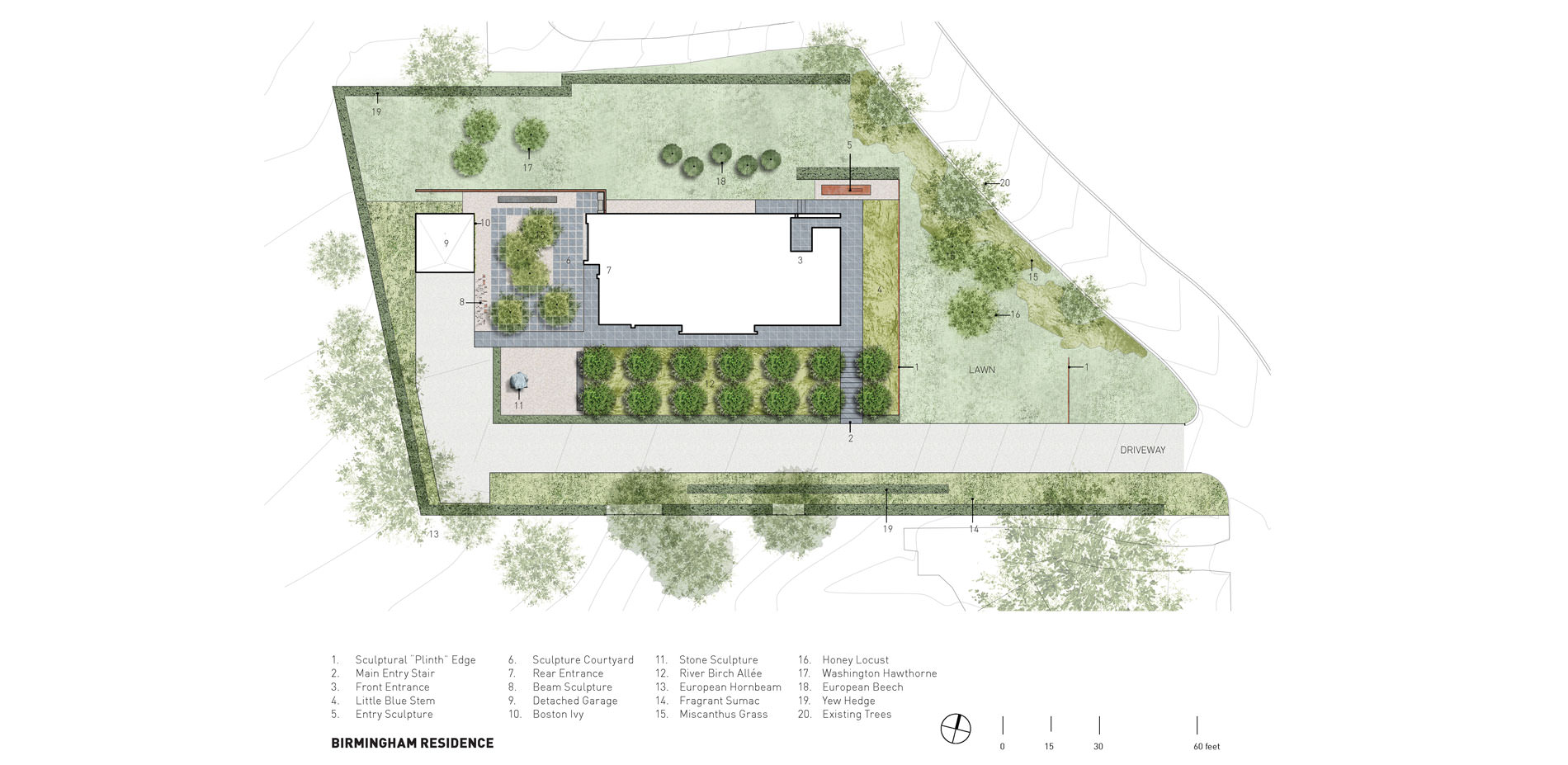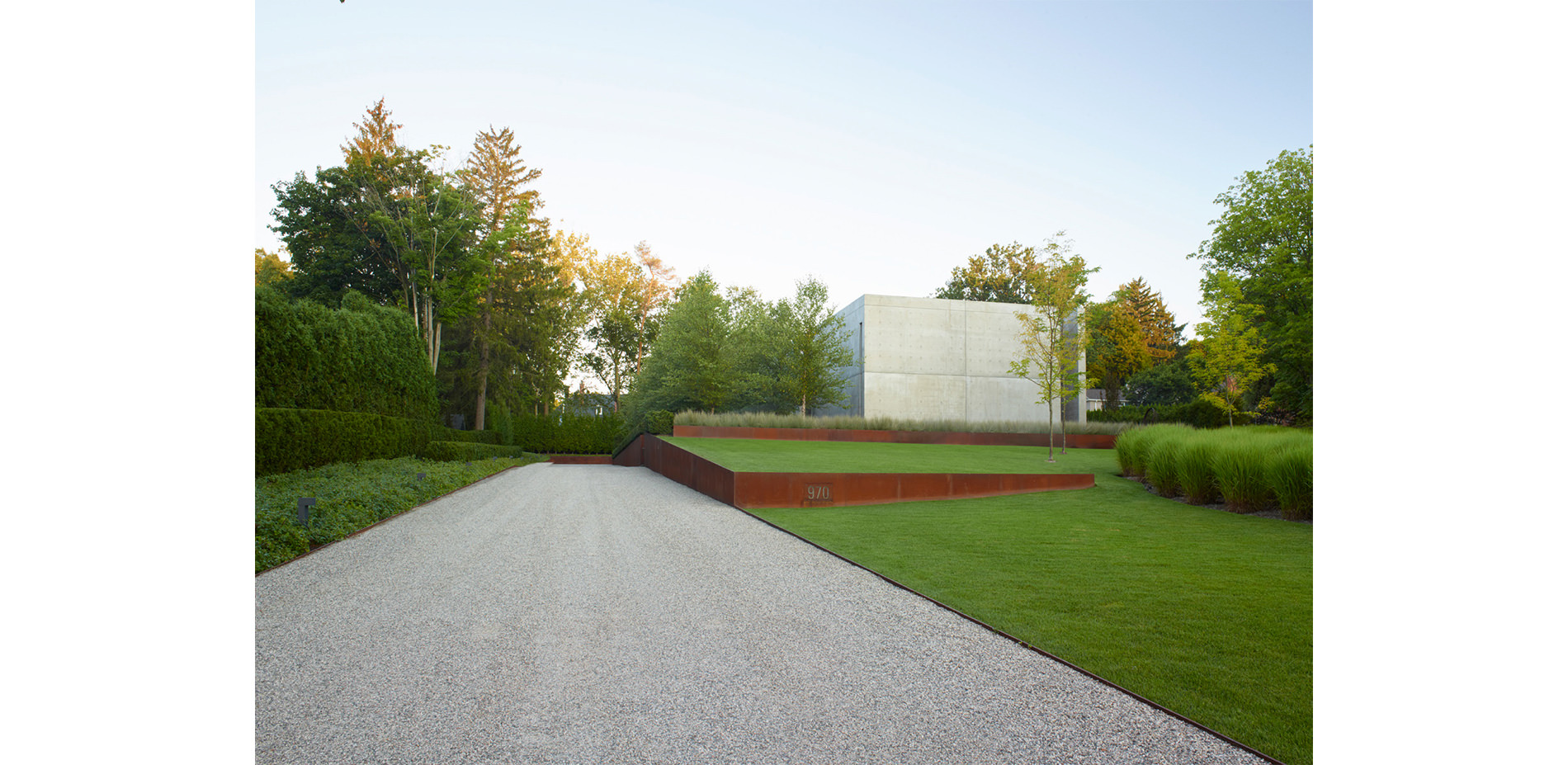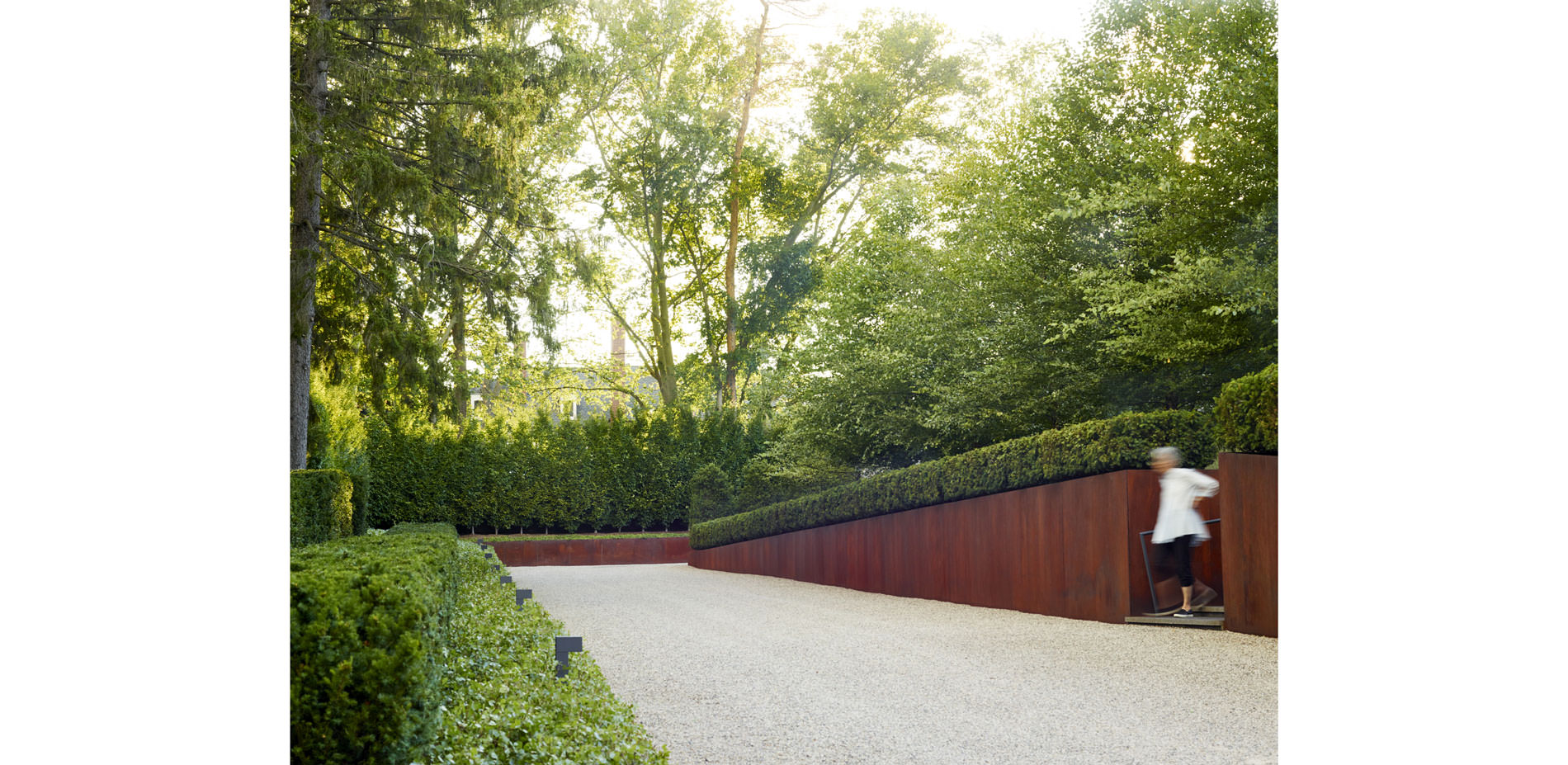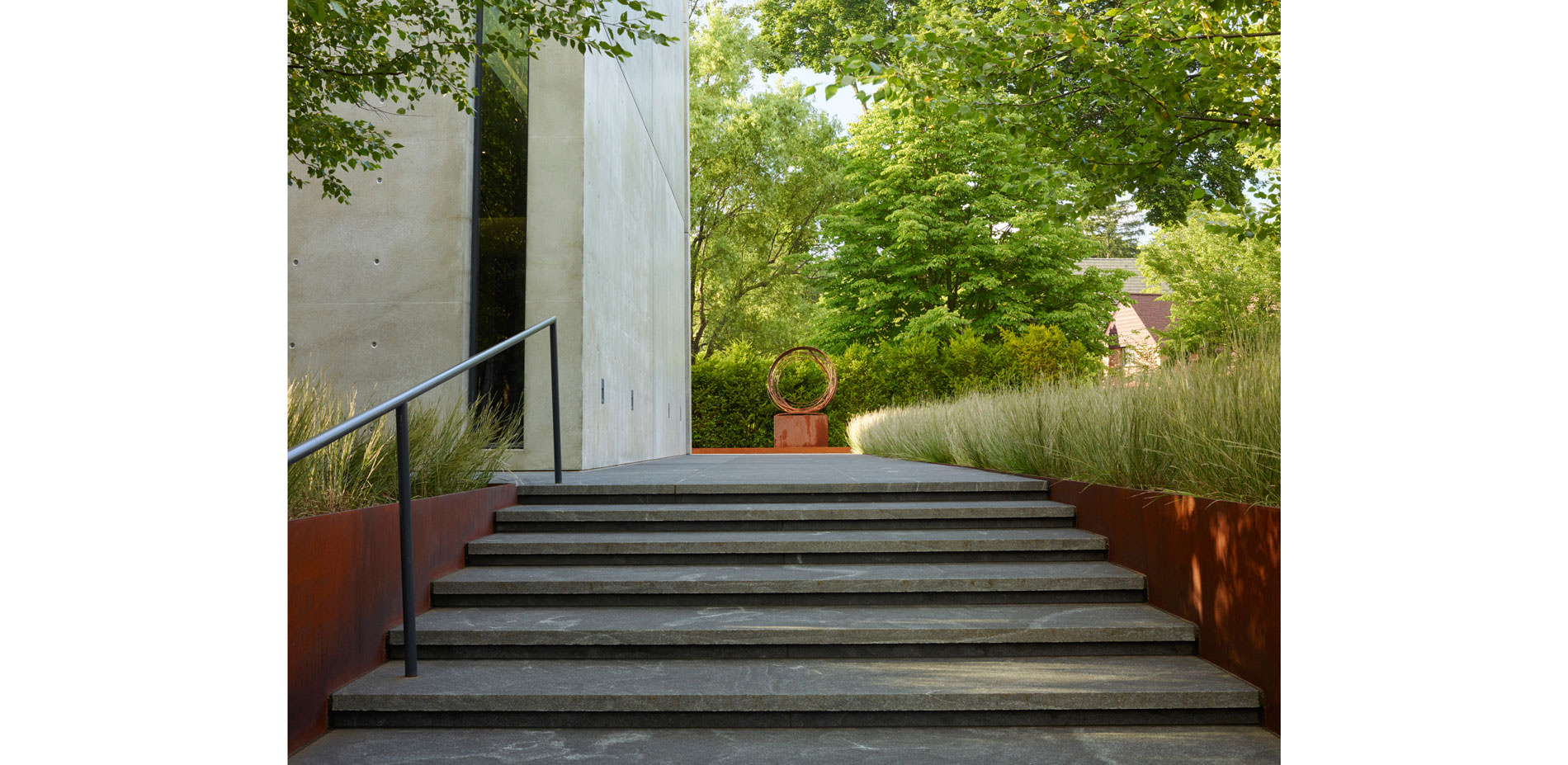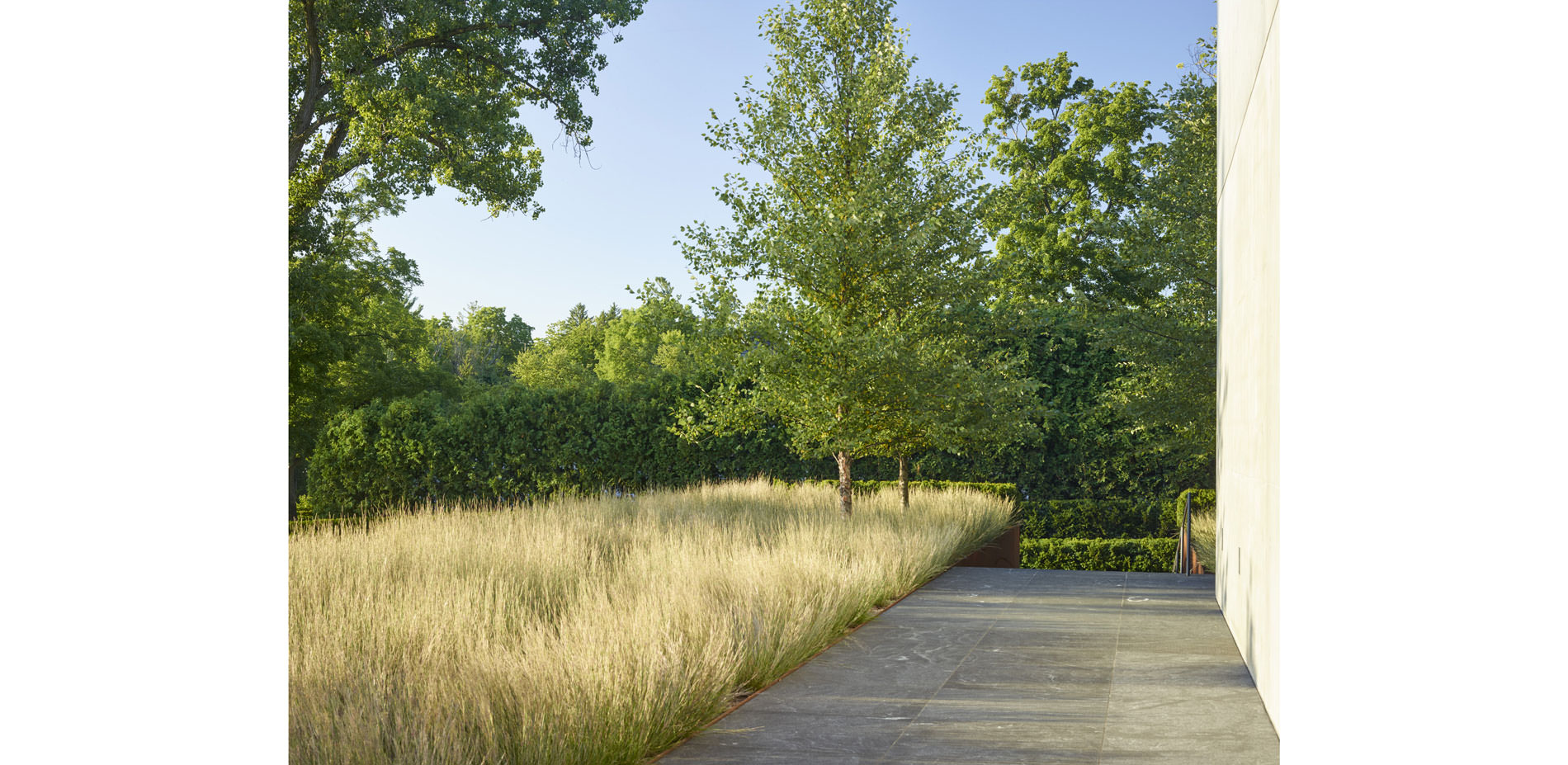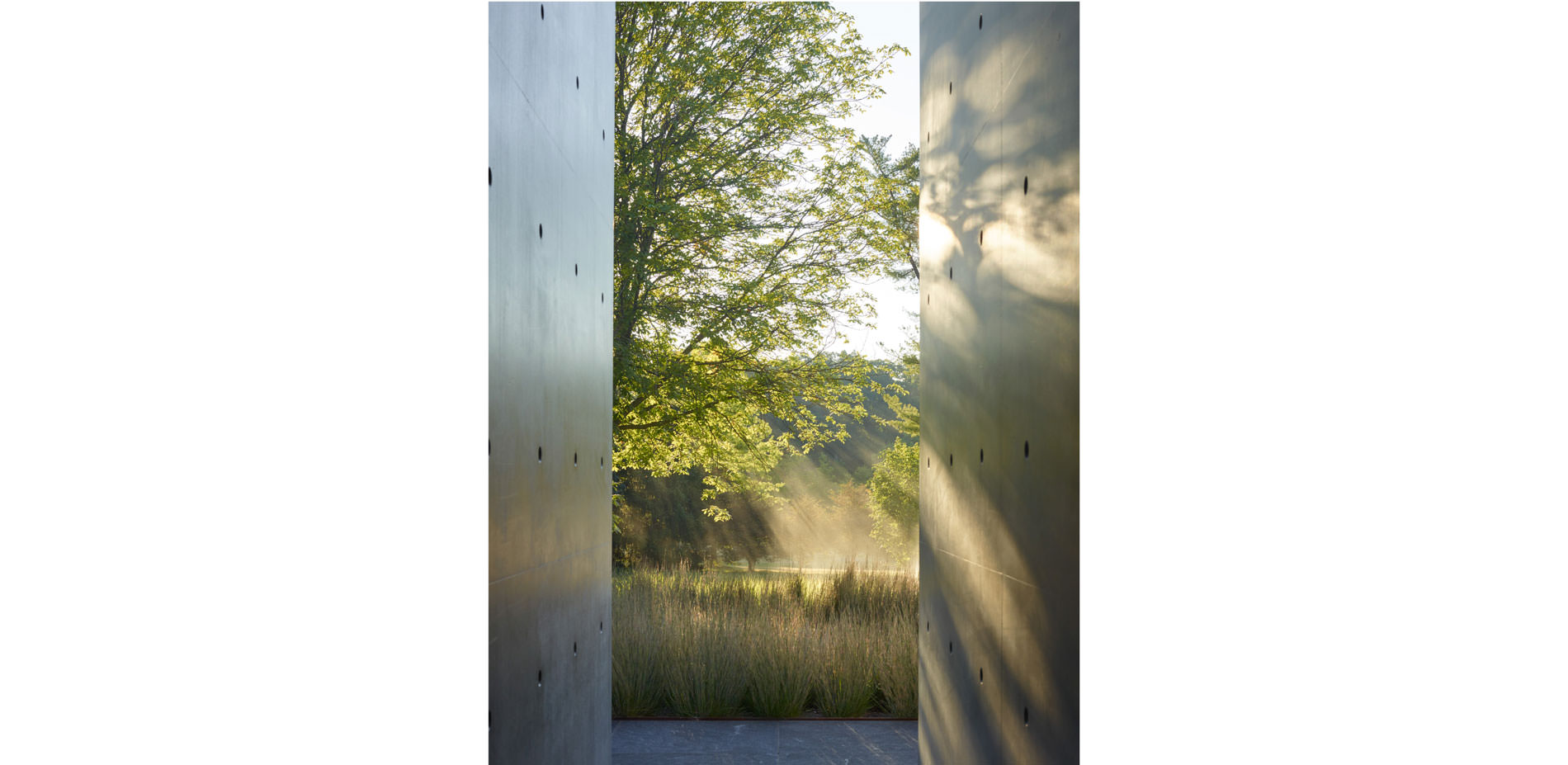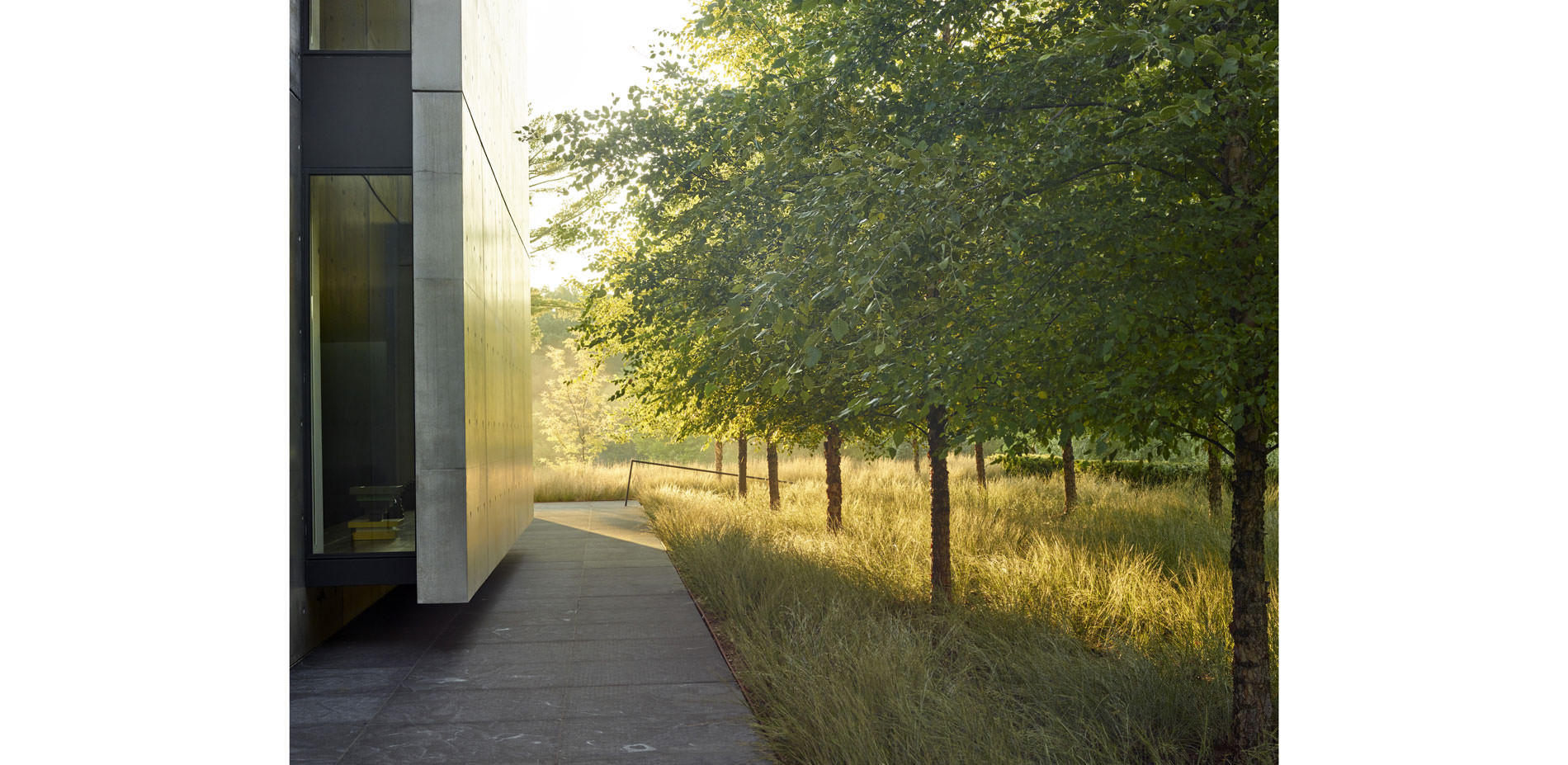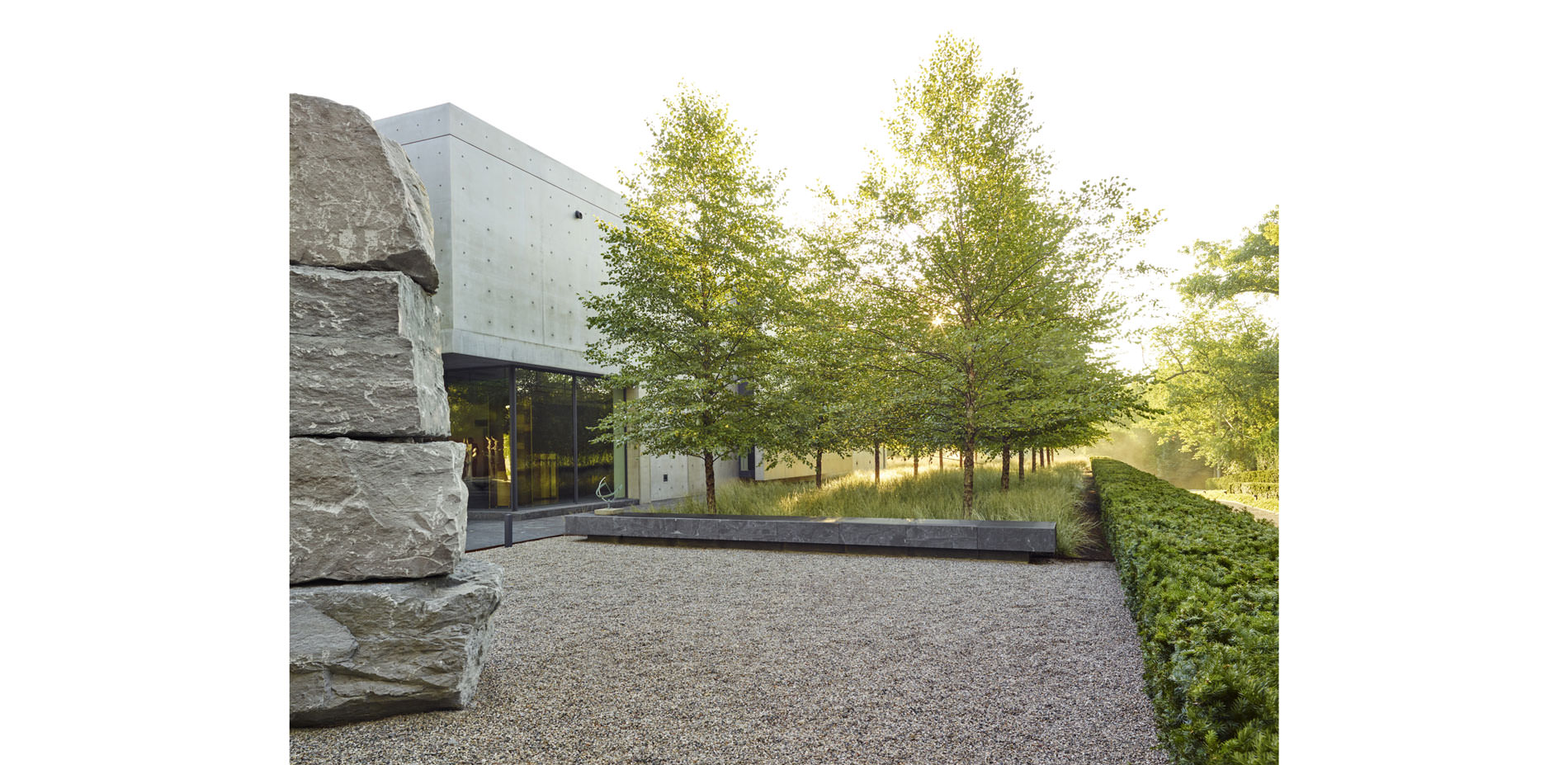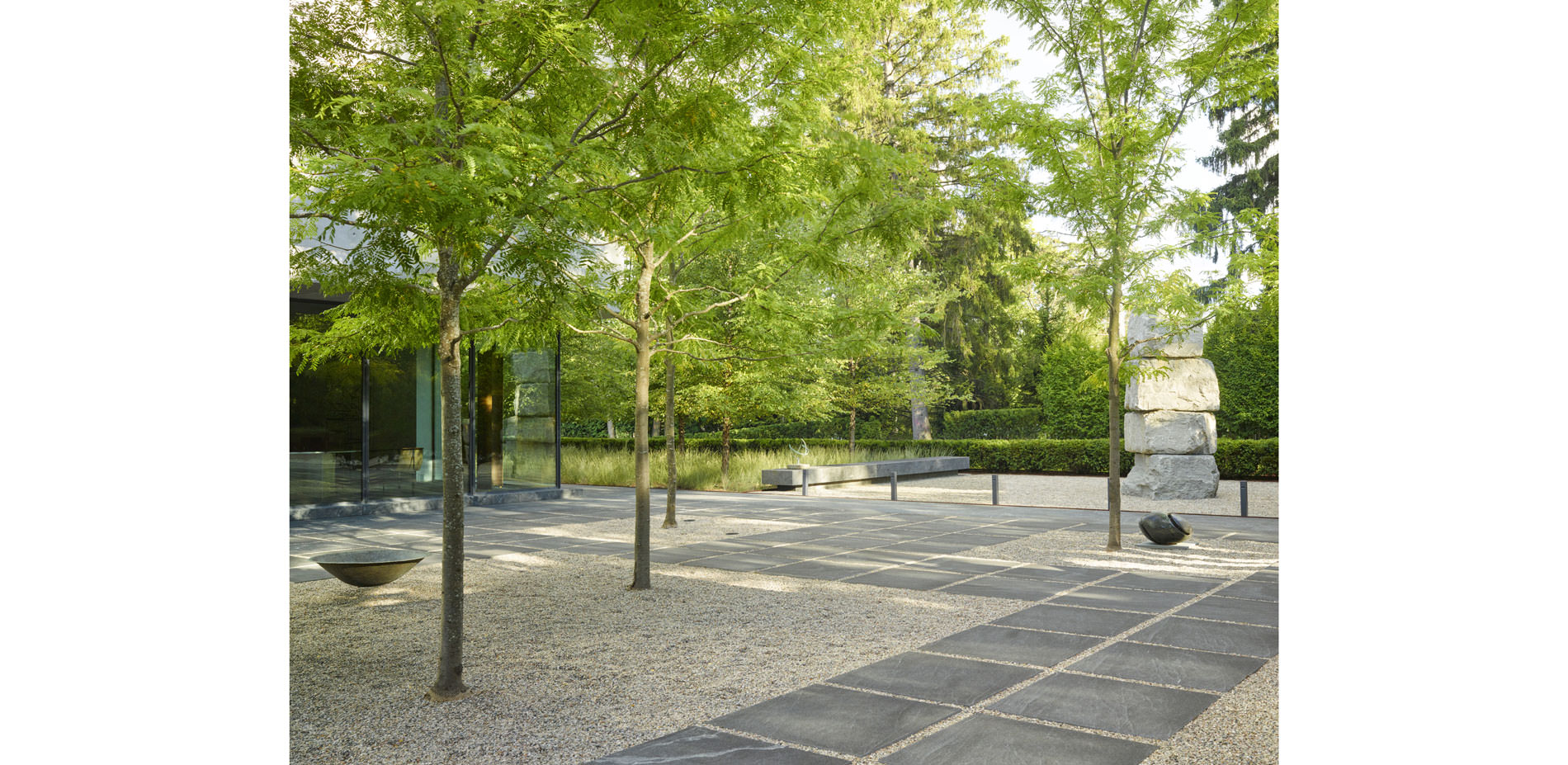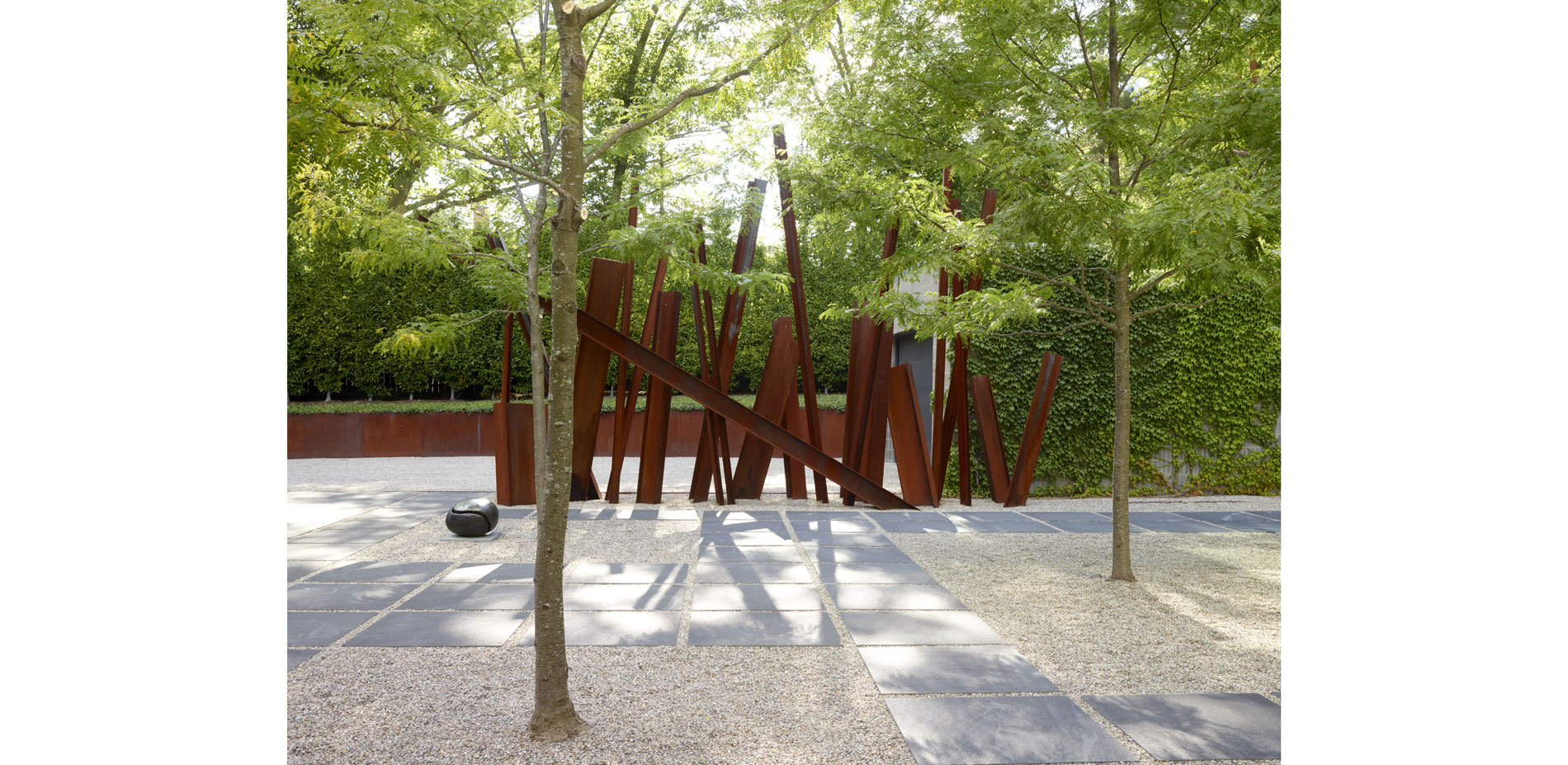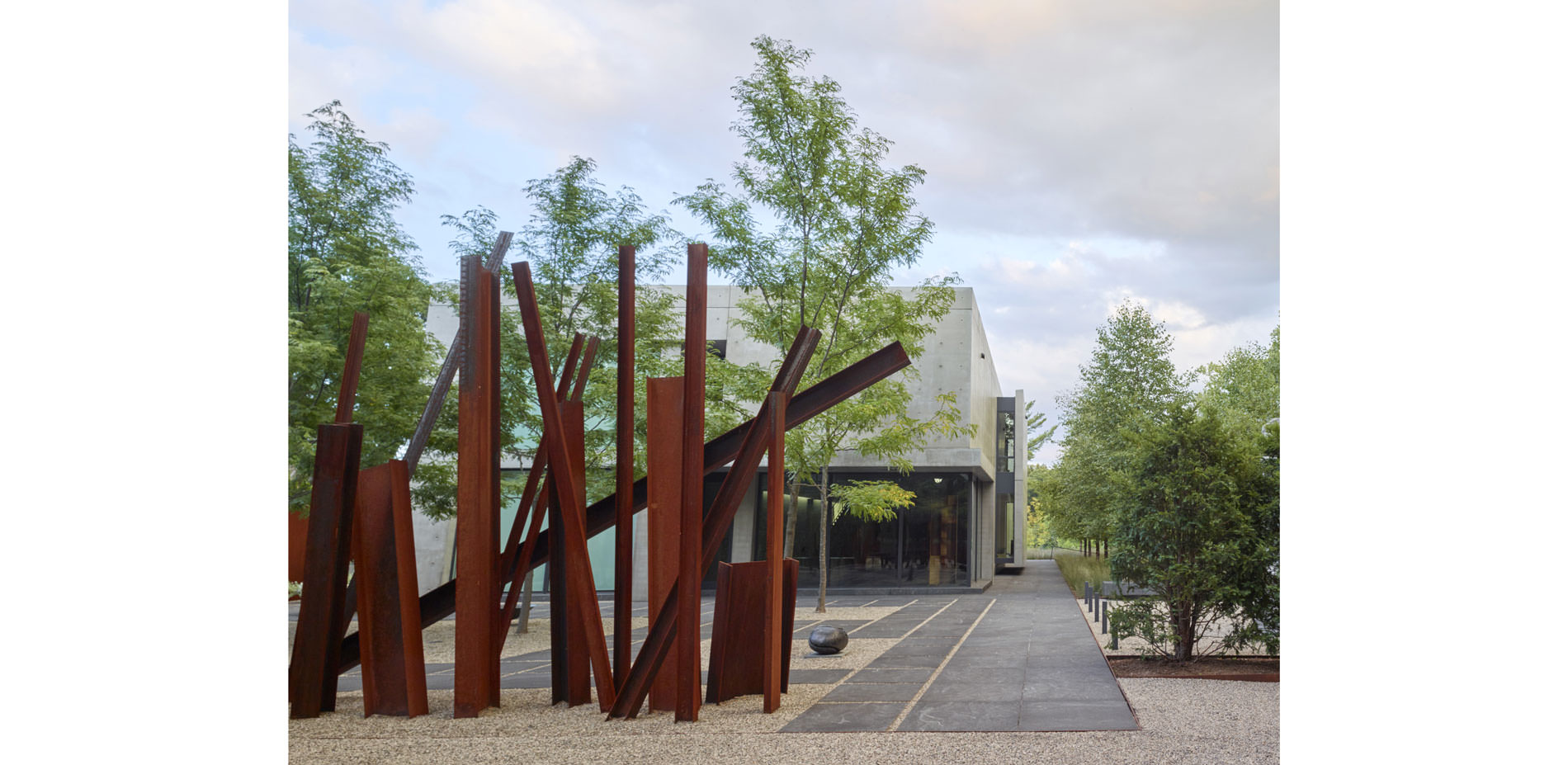Birmingham Residence
Award of Excellence
Residential Design
San Francisco, CA, USA | Andrea Cochran Landscape Architecture | Client: Linda Dresner
It’s the culmination of a patron investing in a designer or landscape architect in their own vision of where they want to take this.
- 2017 Awards Jury
PROJECT CREDITS
Landscape Architects
- Andrea Cochran, FASLA
- Horng-Sheng Tu, ASLA
- Lin Peng
Architect/Contractor
Lighting
Landscape Contractor
PROJECT STATEMENT
The landscape design for the Birmingham Residence sculpts space into a dynamic context for the client’s home and art collection. Situated in a quiet neighborhood in the suburbs of Detroit, Michigan, the residence embodies the client’s adventurous taste and celebrates the region’s historical ties to the steel industry. From the beginning, the landscape architect drew inspiration from contemporary art, reinterpreting the traditional elements of the private garden and creating spaces that complement and soften the visual language of the architecture. The shared belief that a unique personal vision can be embodied in the landscape and that residential landscape design need not be bound by conventional materials and practices guided the design team and client, motivating them to stretch the creative and technical design of the project.
PROJECT NARRATIVE
Context
A pioneering fashion adventurer and the owner of two well-known designer boutiques in Birmingham and New York City, the client wished to create a singular aesthetic at her suburban Michigan home. Doing so meant that the landscape design would need to complement the architecture while simultaneously weaving it into the suburban context. Having grown up in the industrial culture of Michigan, and with a husband in the construction materials business, the client’s personal connection to materiality was central to the project. Throughout the design process, the architect and landscape architect were unified by this emphasis on craft and commitment to a modern and highly curated space.
Design Goals + Challenges
The landscape architecture team arrived to the project after the shell of the residence had been constructed. Working within the spatial definition and language of the existing building envelope, the landscape architect saw the surrounding landscape as an opportunity to create a context for the large, concrete building while also defining clearer usage and movement through the outdoor spaces. The team also felt very strongly that the landscape should, in line with the architecture, stay true to modernist principles by extending the living space outdoors, effectively creating an outdoor gallery softened by plantings.
The Plinth
Upon arrival, the landscape architects found the envelope of the building perched atop a hillside that sloped down to the street. They felt strongly that the building needed a base, or plinth, on which to sit, in order to ground the home in the surrounding context. The sculptural quality of the resulting design—the corten steel that forms a composed frame for the outdoor living spaces around the house—creates a gracious transition between home and surrounding context. The plinth reinforces, yet softens, the minimal, clean lines of the building, creating a unified visual language from the ground up.
Scale + Movement
Beyond visually anchoring the building to the site, the elevated ground plane expands the usable space and creates a transition zone, or scrim, that buffers between the street and the entrance to the site. The landscape design carefully considers the scale and proportion of these outdoor spaces to create a more intermediate, human-scale zone in relationship to the monumental architecture. Numerous scale and siting studies were necessary to create spaces that would soften the building without overshadowing or being eclipsed by it. The highly-curated spaces provide areas for art, seating, planting, and open space, as well as a vertical separation between pedestrian and vehicular spaces.
Choreographed paths for the residents and guests elevate the familiar and allow the landscape to be experienced in different ways. Visitors to the property park along the driveway and are guided clearly toward the grid of river birch along the southern face of the house, where a set of stairs draws them up around the eastern face of the house. They walk the path along a meadow of Little Blue Stem grasses, anchored at one end by a corten steel plinth and sculpture. Along the way, the front door is tucked into a narrow, dramatic slit in the building façade.
The residents come home along a different path. Driving past the visitor’s entrance, they turn into a driveway and park in the detached garage; what makes this moment unique is the installation of beams that protrude viscerally from the earth. A collection of super-sized pick-up sticks, this metal sculpture speaks to the client’s core identity while simultaneously screening the garage. The sculpture courtyard functions as their main entry and is one of the most trafficked areas. Dotted with sculpture and protected by a ceiling of delicate honey locust trees, the sculpture garden and courtyard functions both as a gallery-like space and extension of the home.
Texture
As the landscape architects imposed a spatial order, they also enhanced the relationship of the landscape to the building by introducing a minimalist, yet highly textured, pallete of plants and materials that together highlight the passing of seasons. Corten steel retaining walls echo the area’s connection to the steel industry. Swaths of native Little Bluestem grasses, ragged and rough, juxtapose sharply with the clean lines of concrete and corten. Lush hedges create architectural definition while softening the heavily pedestrian zones around the house. An allée of river birch trees pattern the building’s façade in shadow, creating dynamic movement on an otherwise blank surface. While the plantings near the building are curated with precision, the meadow spaces beyond are more natural and less articulated.
Art in the Landscape
An artistic sensibility was fundamental to the integrity of the project. From the beginning, the team shared images of contemporary art to communicate the visceral, industrial qualities the client wished to see expressed in the design; for both the client and the design team, the raw paintings and sculptures of Anselm Kiefer and the sculptures of Chris Burden resonated deeply. While a significant portion of the design process for the landscape architect required creating the context for and siting of sculpture, the process eventually evolved into working with the client to create the art pieces themselves. This new task challenged the landscape architect to break out of the confines of traditional garden design, creating sculptural elements to tackle design problems that would have traditionally been solved with plant and fencing material. Instead, both the client and the landscape architect sought to evoke the powerful, emotional qualities of an art gallery in the garden—moving beyond the simple sculpture garden to a space with deeper, more lasting resonance.
